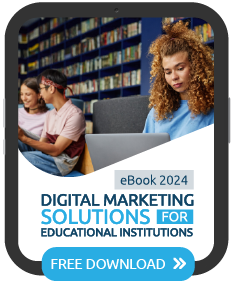There is a definite rise in creating and sharing more visual content online. According to the Pew’s Internet and American Life Project, 56 percent of internet users create or curate photos or videos online, while 32% do both. This trend has created a need for colleges and universities to create more visual content to take part in that trend. Pinterest was the second fastest growing social media platforms in 2012, with a total of about 12% of internet users active on it. With its 90 million users, Instagram, a smart phone photo-sharing application that enables you to upload photos and to share them on social media platforms, holds a slightly higher user adoption percentage at 19%. If your college has limited social media resources, where should you start sharing your content?
Instant Advantages
From the perspective of digital marketing for higher ed, both Pinterest and Instagram enable users to:
- Share visual content easily: Both Pinterest and Instagram allow users to easily share pictures on other social media platforms (mainly, Facebook and Twitter). Pinterest even allows you to share short videos. (link to share videos). Both Pinterest and Instagram allow users to like and comment on pictures as well as to create contests.
- Enhance branding efforts: Both Pinterest and Instagram help colleges and universities make their visual identity stand out. Beyond logos and colors, both can help colleges and universities convey their values and mission, and give a direct “feel” of the school, its faculty and students to prospects or the general public.
Different Uses and Targets
One of the main differences that set these two platforms apart is the demographic of their main users. Pinterest is used more by women than men, and main its user demographic ranges from 24-35 years-old. Instagram users are split almost evenly by gender, and its main user demographic ranges from 18-27 years-old.
The user demographics for both of these platforms can definitely give you insight on who uses them, but the real insight comes with how they are used. Depending on the sort of visual content you want to share, you may decide to lean on one platform more than the other, or use both platforms, but with different goals. Here are two distinct ways they differ:
- Pinterest hosts curation: With its easy to use boards and pinning system, Pinterest is a great tool to curate visual content and classify photos and videos according to themes. Colleges and universities have been creating all kinds of boards to reinforce their branding. For example, there have been inspiration boards for students, college’s values and mission, football team photos, etc.
- Instagram hosts creation: Instagram allows you or your school’s photographer to make picture composition and effects that will make your content unique and give you control over the message of the image. University of Florida uses Instagram to show a behind-the-scenes look at the college events, etc. It is more resource-intensive than Pinterest as it usually requires some coordination between a photographer and the person in charge of social media at the college.
 Source: onlinecolleges.com
Source: onlinecolleges.com
Reasons to combine Instagram and Pinterest
Content creation and curation go hand-in-hand, so it is only normal that larger colleges and universities that have a whole team dedicated to content and social media have been combining their uses of Instagram and Pinterest. Here is why:
- Instagram is a great tool to find student-generated content about your school. With the help of hashtags, you can find photos created about your college or university. With so many of your students using the application, it is important to create an account to keep listening to the organic conversations happening around your school (rather than just those created by your school).
- The content created on Instagram can then be pinned on Pinterest and shared on other platforms.
- From an SEO perspective, using both platforms is great for search engines.
Take a look at how Boston College is uses both Instagram and Pinterest.
Not all schools have the resources to start using both products at the same time, so here are a few questions to ask yourself before making the decision:
- Does our college create visual content on a regular basis?
- Is it in our culture to take pictures or to encourage students to share?
- Does our social media strategy include a clear visual content creation and content curation strategy? If you do not create much visual content or lack time and resources to create, it may be good to concentrate on brainstorming about a visual content creation strategy.
- What do we want to achieve on the platform? Do we wish to reinforce our branding or to engage with students in a more direct way?
Now that you know how sharing visual content can help your college and university expand branding and social media efforts, how do you plan on using it? Or, if you’re already in thick of things, what creative campaigns or themes have you launched through Pinterest and/or Instagram?





